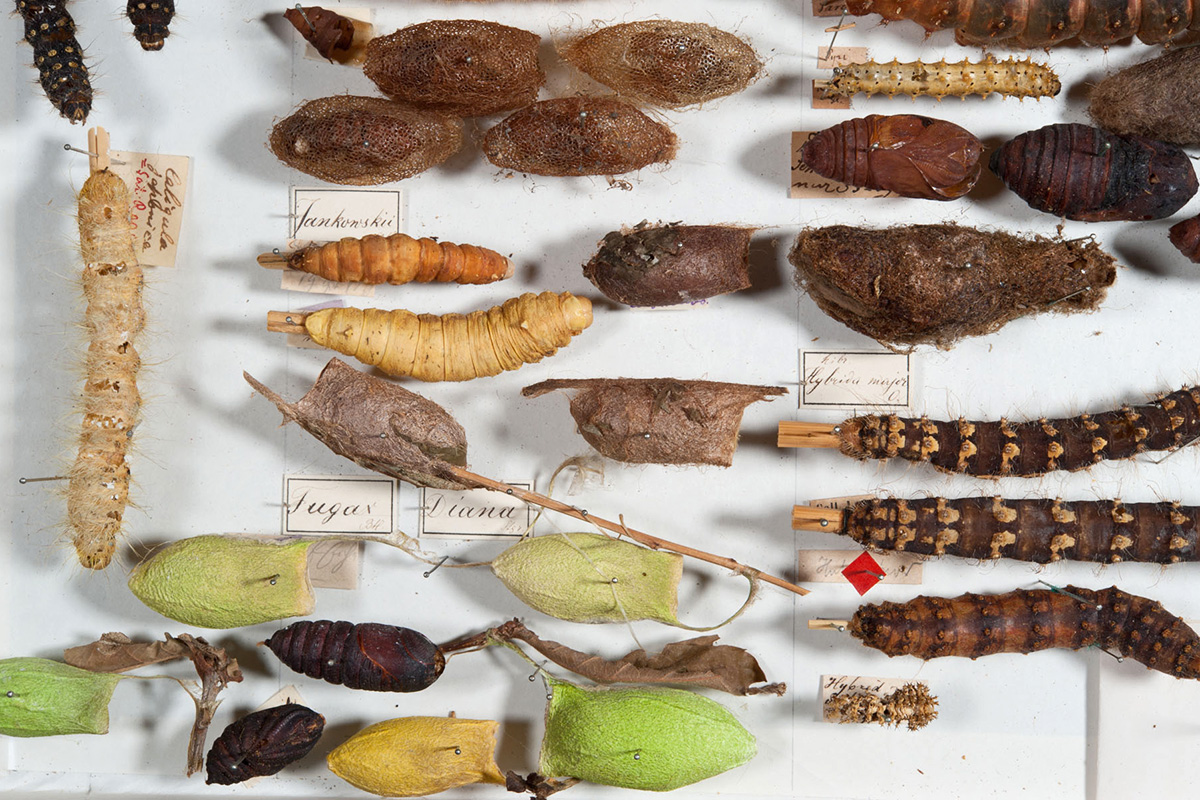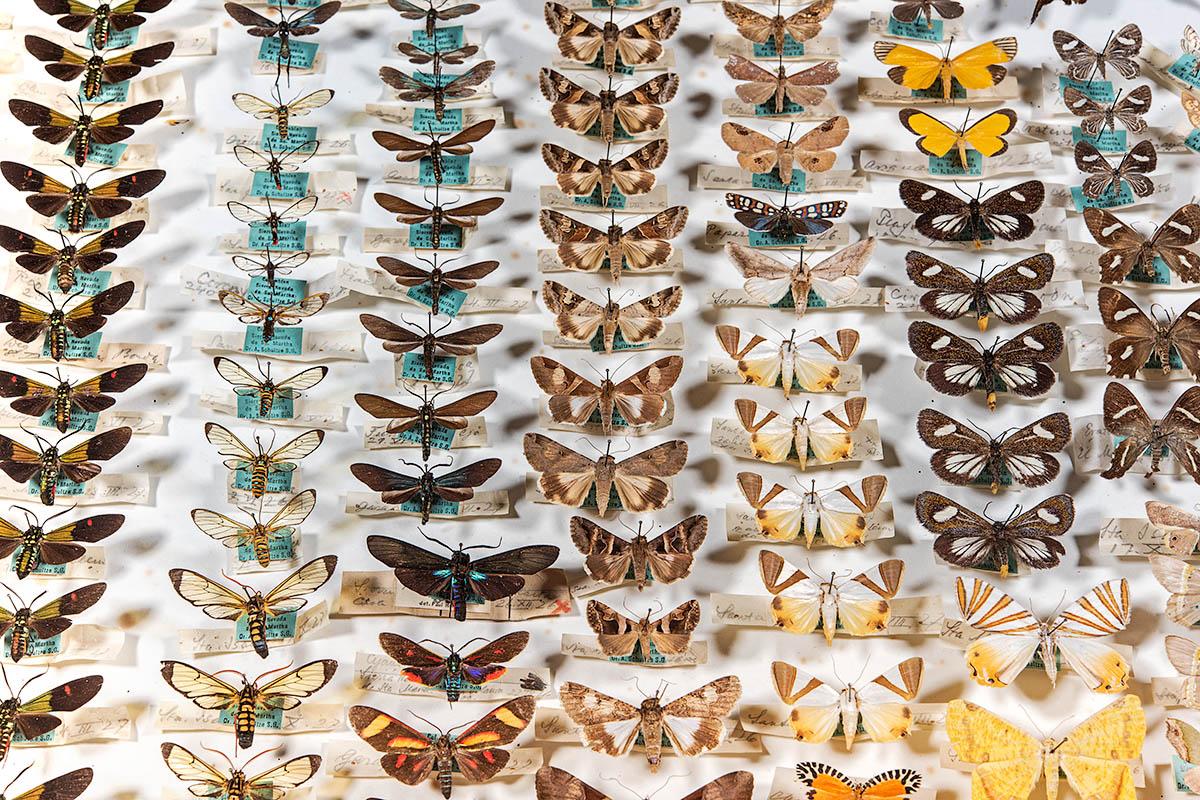The collection of butterflies, moths and caddisflies (lat. Lepidoptera and Trichoptera) consists of various insect groups and the display is truly heterogeneous. There are several co-existing individual collections that either cover a faunistic region or are special collections from a taxonomical or ecological perspective. Alongside these smaller sub-collections, there is the main collection that follows systematic principles and is continuously expanded.
The Butterfly and Moth Collection is a systematically arranged dry collection with an additional small wet collection. It is the most type-rich collection in Germany. A total of 4 million butterflies and moths is stored in 450 historic wooden cabinets containing 11,000 drawers. The collection comprises approximately 75,000 species and additionally 6,000 type specimens that can be used to identify other individuals of the species. Most specimens originate from the Palaearctic, Africa and South East Asia, but other continents are also represented. One focus of the collection are micromoths (Microlepidoptera), which comprise the most primitive families of Lepidoptera.
The collection of caddisflies is another core attraction of the department. It is stored in ten cabinets and comprises about 10,000 pinned specimens. The ethanol collection holds 40,000 specimens that are stored in steel cabinets. In total, types of about 600 species are kept in the collection. Again, the focus is on the Palaearctic, Africa and South East Asia.
Digitisation
The GloBIS (Global Butterfly Information System) Project collates scientific information about butterflies and moths in cooperation with many natural history museums and other research partners, using global taxonomic catalogues. The GloBIS website gives access to species lists and photographies of species, including specimens from the Museum für Naturkunde Berlin.
The trays of some families have been scanned and assigned QR codes. This applies to the Hepialidae, Saturniidae, Eupterotidae, Sphingidae, Limacodidae, Arctiidae, Pieridae, Hesperiidae and African Lycaenidae families. The photos can be viewed on the Museum’s homepage.
There is a database of the Trichoptera in the ethanol collection, which, however, is not accessible online.
History
The oldest parts of the collection are over 200 years old, originating from the late 18th century and collated by J. C. von Hoffmannsegg and H. J. Laspeyres. Hoffmannsegg was one of the founding fathers of the Zoological Museum in 1809, which later became today’s Museum für Naturkunde. The following significant scientific collections should be mentioned: holarctic butterflies and moths and tropical butterflies by O. Staudinger, Palaearctic butterflies and moths by R. Püngeler, African butterflies by A. Schultze, South American butterflies by H. Stichel, Chinese butterflies and moths by A. Mell and mining insects by M. E. Hering. There are also large and some smaller collections by A. Bergmann, E. Urbahn, K. Huhst, H. Belling, H. Steuer as well as entire yields from expeditions (e.g. the Schäfer Expedition 1938-39, or the Kaiserin Augusta River (Sepik) Expedition 1911-1913).
Highlights
Staudinger‘s Caterpillar Collection
Otto Staudinger‘s dry collection of caterpillars and pupae, which has been part of the Museum für Naturkunde since 1900, are unique from a conservatory perspective. Characteristics such as colouring and structure have been extremely well preserved and are used for the identification of species.

Research
The collection provides a rich research basis for the public as well as for scientists. Amateur entomologists as well as professional researchers can be given access to the collection by the Curator and use it as database and for identification purposes. In addition, the Museum organises and carries out its own expeditions in order to explore biodiversity in Africa, South East Asia and South America. Thus, we are constantly and considerably increasing the collection, involving specialists at home and abroad in the study of the collected material.
Library
The Collection’s own library is a continuously growing archive of literature about butterflies, moths and caddisflies. It is part of the Zoological Library, but is managed and systematically expanded by the Curator. Access to the collection and the attached library can be given by the Curator.
